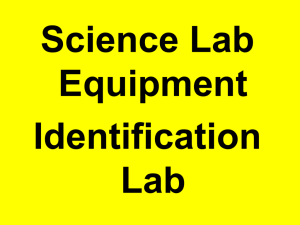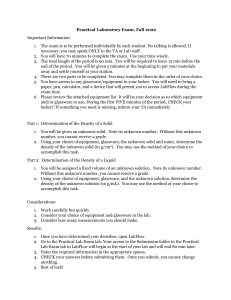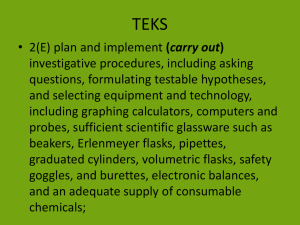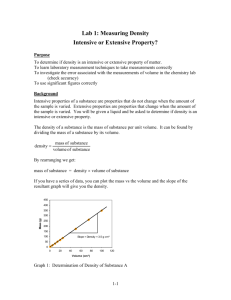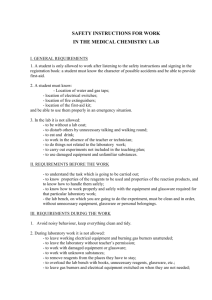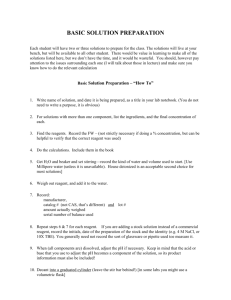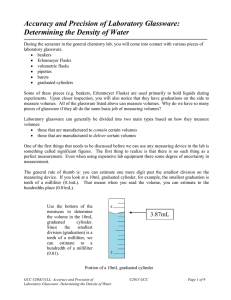che142Lab01.doc
advertisement
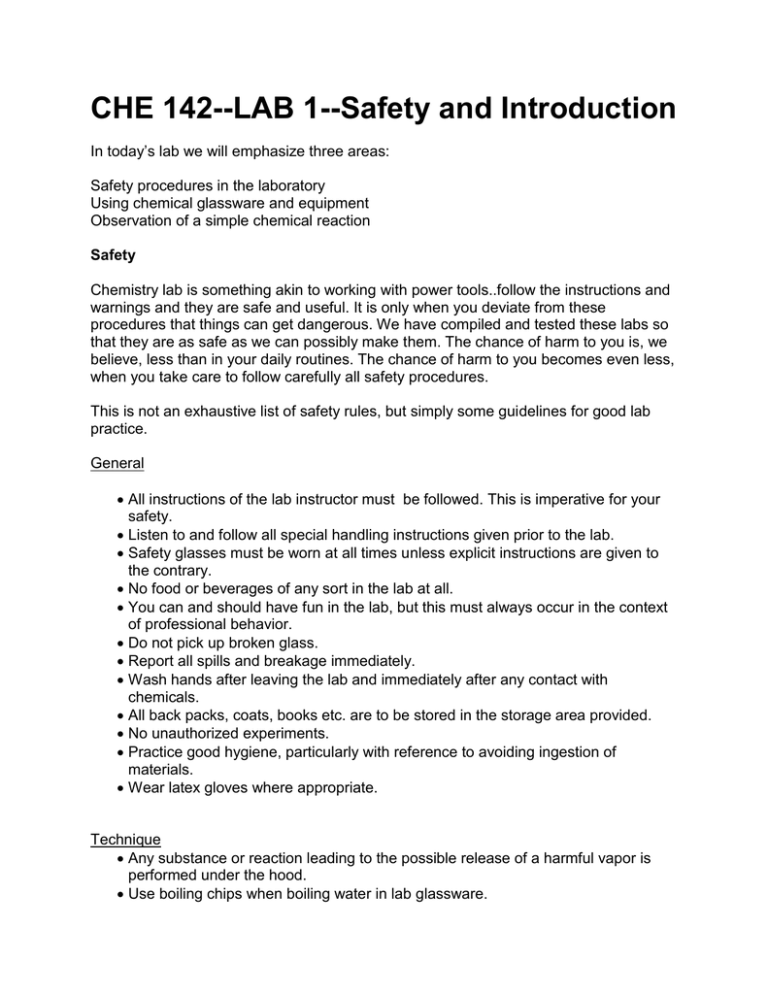
CHE 142--LAB 1--Safety and Introduction In today’s lab we will emphasize three areas: Safety procedures in the laboratory Using chemical glassware and equipment Observation of a simple chemical reaction Safety Chemistry lab is something akin to working with power tools..follow the instructions and warnings and they are safe and useful. It is only when you deviate from these procedures that things can get dangerous. We have compiled and tested these labs so that they are as safe as we can possibly make them. The chance of harm to you is, we believe, less than in your daily routines. The chance of harm to you becomes even less, when you take care to follow carefully all safety procedures. This is not an exhaustive list of safety rules, but simply some guidelines for good lab practice. General All instructions of the lab instructor must be followed. This is imperative for your safety. Listen to and follow all special handling instructions given prior to the lab. Safety glasses must be worn at all times unless explicit instructions are given to the contrary. No food or beverages of any sort in the lab at all. You can and should have fun in the lab, but this must always occur in the context of professional behavior. Do not pick up broken glass. Report all spills and breakage immediately. Wash hands after leaving the lab and immediately after any contact with chemicals. All back packs, coats, books etc. are to be stored in the storage area provided. No unauthorized experiments. Practice good hygiene, particularly with reference to avoiding ingestion of materials. Wear latex gloves where appropriate. Technique Any substance or reaction leading to the possible release of a harmful vapor is performed under the hood. Use boiling chips when boiling water in lab glassware. Use reasonable transfer techniques, planned so as to minimize the possibility of spillage, especially onto your self!!! Weigh solids into a pre-weighed beaker, not onto the balance pan. Learn how to light a bunsen burner and turn it off when you are done. Attire No shorts No open-toed shoes Wear Old clothes, the kind you are willing to part with Beware of bulky sweaters with long sleeves around flames No contact lenses; wear eyeglasses Remember: your clothes are your first line of protection in the event of an accident. Know Location of all safety devices Eyewash Fire Blanket Shower First-Aid Kit Spill Pillows Bicarbonate for acid spills Fire Extinguisher Additional devices in contiguous labs Handling Reagents Direction of flow is away from the bottle Use only clean instruments provided for dispensing reagents Never return a reagent to the original bottle Care of Equipment Wash all glassware after finishing lab. Set glassware down GENTLY on stone tables and in sinks. Follow instructions for use of all electronic equipment. Keep liquids away from microcomputers. Report all spills on equipment immediately. Disposal of wastes Dispose of toxic or environmentally harmful chemicals in the designated receptacles. Dispose of clean glassware and clean plastic ware in the designated waste containers If in doubt DO NOT POUR DOWN THE DRAIN. Ask first!!! Report all spills of toxic substances immediately. Remember: our cleaning staff empties the trash. Do not place anything in the trash that you would not be comfortable with touching yourself. Laboratory Equipment Your instructor will first display and demonstrate some common laboratory equipment including: Beakers Flasks Stirring rods Graduated cylinders Ring stands Wire gauze Busnsen burners Wash Bottles Thermometers Conventional Balances Electronic Analytical balances A Simple Reaction In this exercise you will learn the identity and use of some common laboratory equipment , and run a simple chemical reaction. Using a graduated cylinder, measure out 50 ml of vinegar and transfer this to a 150 ml beaker. Now weigh into a beaker 3.2 grams of baking soda and transfer this into a 250 ml flask. Dilute this to 100 ml and swirl carefully until dissolved. Transfer this to a beaker. Into a clean flask with a slice of white paper underneath it place 20 ml of the vinegar, and add several drops of bromocresol green solution. Now add 10 ml of the bicarbonate solution and record your observations. What do you see and what is going on? Now add 20 ml more of the vinegar. What happens? Add 20 ml more of the bicarb...what happens? What’s going on? Measuring Temperature Now measure some temperatures. Measure room temperature, your skin temperature, the freezing point of water and the boiling point of water. Weighing a sesame seed Is it possible to weigh a sesame seed using the triple beam balance? The analytical balance?
